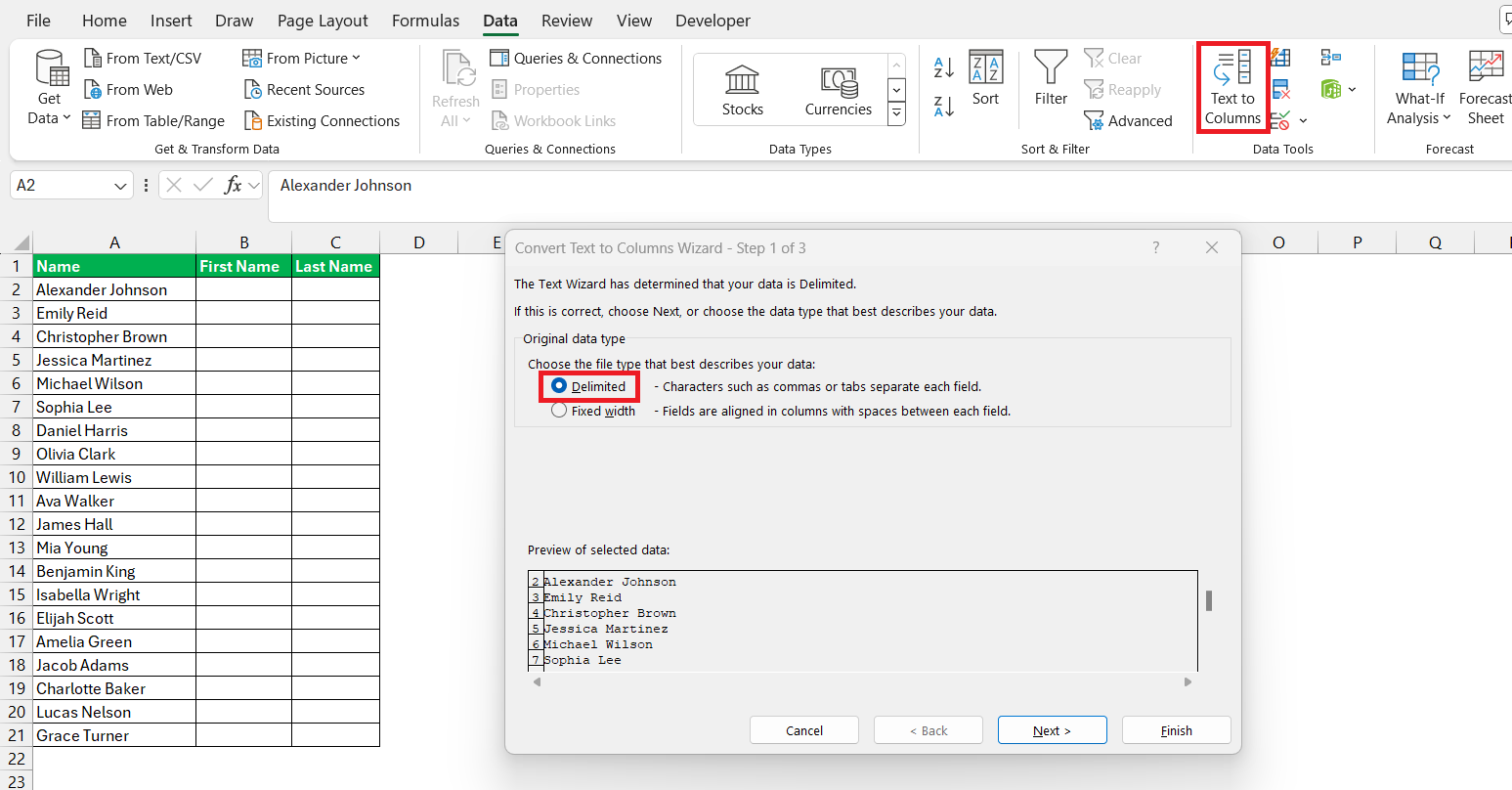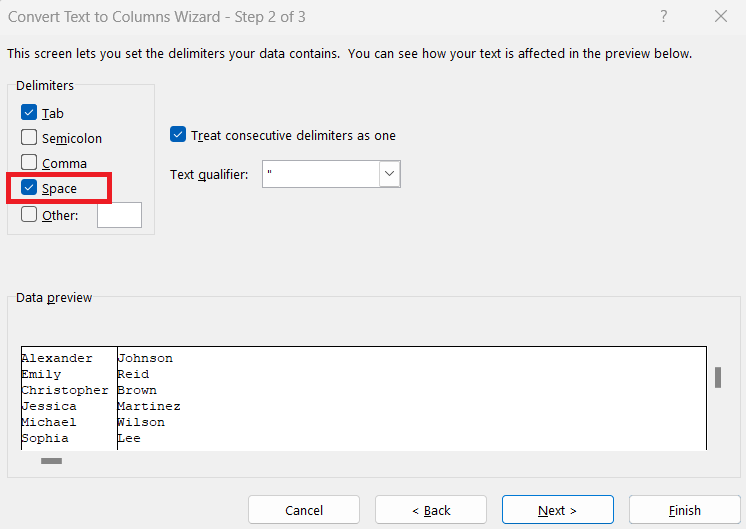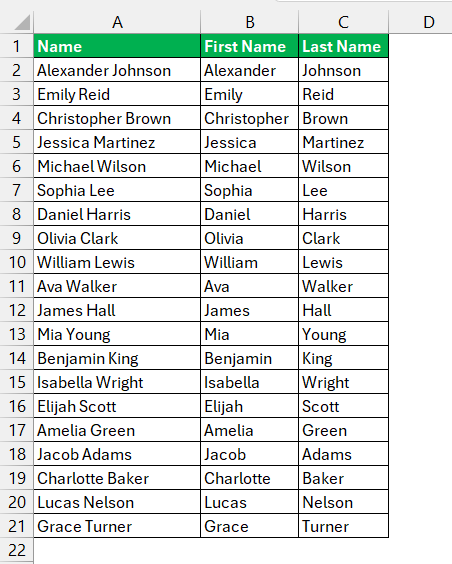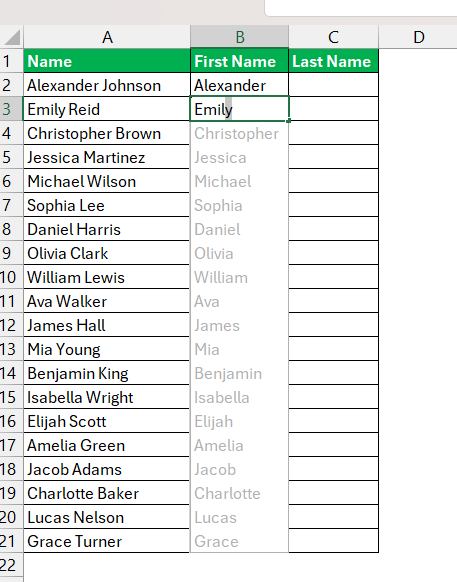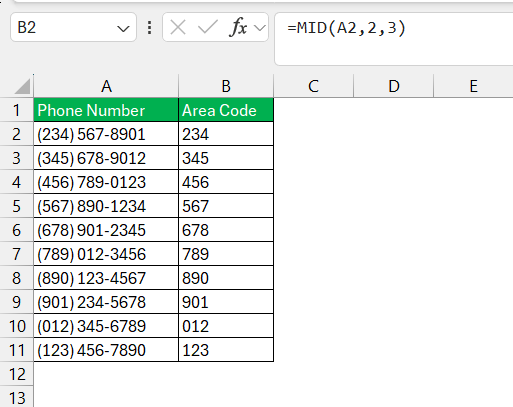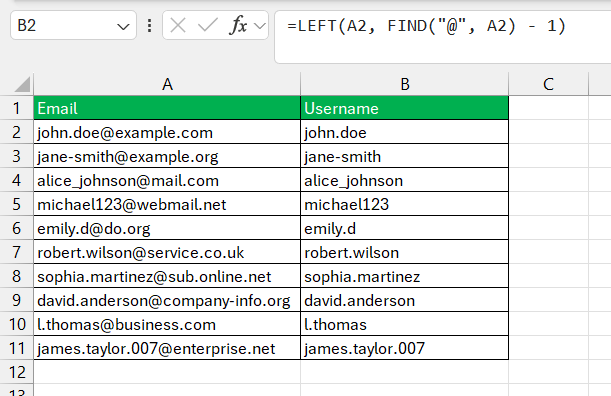Efficient data management in Microsoft Excel often begins with mastering cell splitting. Whether I’m breaking down a single column of names into first and last names or dividing an address field into street, city, state, and zip code, understanding how to split cells greatly enhances my data analysis and presentation. By using tools like the Text to Columns Wizard, Flash Fill, and various formulas, I can streamline complex datasets, making them easier to handle and more insightful.
Key Takeaways:
- Text to Columns Wizard: This versatile tool helps me separate data into multiple columns based on delimiters or fixed widths, simplifying data organization tasks.
- Flash Fill: This automated feature detects patterns in my data entry and completes the rest for me, saving time and reducing manual errors.
- Formulas for Precision: Functions like LEFT, MID, and RIGHT give me detailed control over text extraction, which is perfect for consistently structured data.
- Advanced Techniques: By combining FIND and LEN functions with other text functions, I can handle more complex splitting scenarios and achieve dynamic text manipulation.
- Best Practices: I always ensure data integrity and consider accessibility when splitting cells to maintain consistency and clarity in my spreadsheets.
Table of Contents
Introduction to Cell-Splitting Mastery
Why Mastering Cell Splitting is a Game Changer
Imagine the ease I experience when analyzing a name column that’s neatly divided into first and last name columns, or swiftly turning a single address field into separate columns for street, city, state, and zip code. Mastering the art of cell splitting in Excel has opened up a world of possibilities for me, transforming my data management experience.
With this skill, I can simplify complex data sets and pave the way for more sophisticated analysis and clearer presentations. Whether I’m a seasoned professional or just starting out, the ability to split cells efficiently is a must-have tool in my Excel quiver.
The Quick and Easy Approach to Learning Excel Cell Division
Embarking on my Excel cell division journey need not be daunting. With a structured approach and a step-by-step guide, I can start slicing and dicing data like a pro in no time. The key is to start with the basics—understanding what cell splitting means and why I’ll need it, then exploring the tools Excel offers for this very purpose.
By assimilating the simple techniques first, such as using the ‘Text to Columns’ feature, and then gradually advancing to formula-based methods, my learning curve will feel more like a leisurely stroll than a steep climb. Plus, by tapping into Excel’s user-friendly interface, I can achieve effective results quickly and with minimal effort.
Dive Into Excel Techniques for Splitting Cells
Text to Columns Wizard: Your Go-To Tool
The Text to Columns Wizard in Excel is like my trusted magic wand for neatly organizing my data. It’s an easy-to-use feature for separating text from one column into multiple columns based on a delimiter—such as commas, spaces, or custom characters—or a fixed width.
For example, when the first and last names are separated by a space, I select space as the delimiter.
Next, I select the cell where I want to display the result and press Finish.
With just a few clicks, I can use this wizard to have each element in its own column, making it easier to sort data.
Flash Fill: The Smart and Speedy Alternative
Flash Fill in Excel is my smart assistant, keenly observing patterns in my data entry and automating the rest for me almost instantaneously. It’s perfect for when I’m splitting names, dates, or any other uniform text across cells. As soon as I manually input the pattern in a few cells, Flash Fill springs into action and completes the sequence.
This not only saves me invaluable time but also reduces errors that can happen with manual entries. What’s fantastic is that Flash Fill often works automatically, but I can also trigger it with a simple press of Ctrl + E. It’s like having a helpful friend in Excel who finishes my sentences—in the best possible way!
Splitting Cells Using Formulas
Dissecting Data with LEFT, MID, and RIGHT Functions
The LEFT, MID, and RIGHT functions are my surgical tools for precision when I need to split text in Excel cells based on character count. LEFT skims data from the start of the text, RIGHT from the end, and MID takes a slice from any specified point within the text. They work wonders when dealing with data that has a consistent structure, allowing me to specify exactly how many characters I want to extract into a new cell.
For example, extracting area codes from phone numbers or pulling out product codes from a mixed inventory list can be effortlessly accomplished using these trusty functions.
By mastering these, I welcome a level of customizability and control that makes dealing with any text-based data a breeze.
Advanced Splitting Tricks with FIND and LEN
For more complex scenarios where character count isn’t uniform, the FIND and LEN functions are my ace up the sleeve. FIND helps me locate the position of a specific text within a cell, and LEN gives me the total character count. When used in tandem with LEFT and RIGHT, these functions allow dynamic text extraction.
For example, to separate usernames from email addresses, I can use FIND to get the position of the “@”, then use LEFT to grab the username.
LEN comes into play when I need to work out how many characters to extract with RIGHT, ensuring nothing is left behind. With these advanced tricks in my toolkit, the possibilities for manipulating and restructuring my Excel data are truly limitless.
Best Practices When Handling Split Cells
Maintaining Data Integrity After Splitting
Once I’ve split cells in Excel, it’s crucial to preserve their integrity. This means double-checking that data has been correctly divided and is still accurate. I always keep backups before making large-scale changes. After cell division, I ensure all resulting columns have the appropriate data types and formats applied for consistency.
If I’ve used formulas for splitting, I consider using ‘Paste Values’ to replace them with static data to prevent errors if the source cells change. I integrate data validation checks to maintain the quality of my dataset post-transformation, so I can confidently use my data for further analysis or reports.
Accessibility Concerns with Split or Merged Cells
Split or merged cells in a spreadsheet can be more than a formatting quirk—they might pose accessibility issues for users with disabilities relying on screen readers. These assistive technologies depend on a consistent cell structure to navigate and interpret data. Merges and splits can disrupt this structure, leading to confusion and misinterpretation.
To promote accessibility, I aim for a simple and predictable table layout. I include clear column headers, avoid unnecessary merges, and consider using alternative methods like Text to Columns for splitting data without affecting the table’s navigation flow.
FAQs – Excel Cell Splitting Expertise Revealed
What are split cells in Excel?
Split cells in Excel refer to dividing the content of a single cell into multiple adjacent cells. This is typically done to better organize and separate data within a spreadsheet for clearer analysis and readability. Whether you’re breaking down a name into first and last or separating dates and times, split cells help in managing and interpreting your data efficiently.
What is the shortcut to split a single cell in Excel?
Excel doesn’t have a one-step shortcut to split cells. However, you can access the Text to Columns feature, which enables cell splitting, by pressing Alt + A + E. This sequence of keys opens up the wizard where you can define how to divide your cell content—be it by delimiters like commas or spaces, or by specifying fixed widths.
How Do I Choose Between Text to Columns and Flash Fill?
Choose Text to Columns when you have a clearly defined delimiter or a consistent data structure. It’s ideal for splitting standardized data formats, like CSV files. Alternatively, use Flash Fill for more varied or less structured data; it’s perfect when you manually type a pattern that Excel can recognize and replicate. Consider the nature of your task and the format of your data for the best tool choice.
Can I Split a Single Cell into Diagonal Sections in Excel?
While Excel doesn’t allow for actively splitting a cell’s contents diagonally for data entry, you can visually split a cell diagonally for formatting purposes. This is typically used to differentiate two pieces of information within the same cell, such as marking the division between different attributes of a table. To visually split a cell diagonally, go to the ‘Border’ tab in the ‘Format Cells’ dialog and select the diagonal border style.
How do I split a single cell into multiple rows in Excel?
To split a single cell into multiple rows, you can use the ‘Text to Columns’ feature, select a delimiter, and spread the data across columns. Then, transpose the columnar data into rows. Alternatively, utilize Excel formulas such as MID, LEFT, RIGHT combined with FIND, or employ Flash Fill to manually define the split structure and drag it down for a series of cells to mimic row splitting.
John Michaloudis is a former accountant and finance analyst at General Electric, a Microsoft MVP since 2020, an Amazon #1 bestselling author of 4 Microsoft Excel books and teacher of Microsoft Excel & Office over at his flagship MyExcelOnline Academy Online Course.

